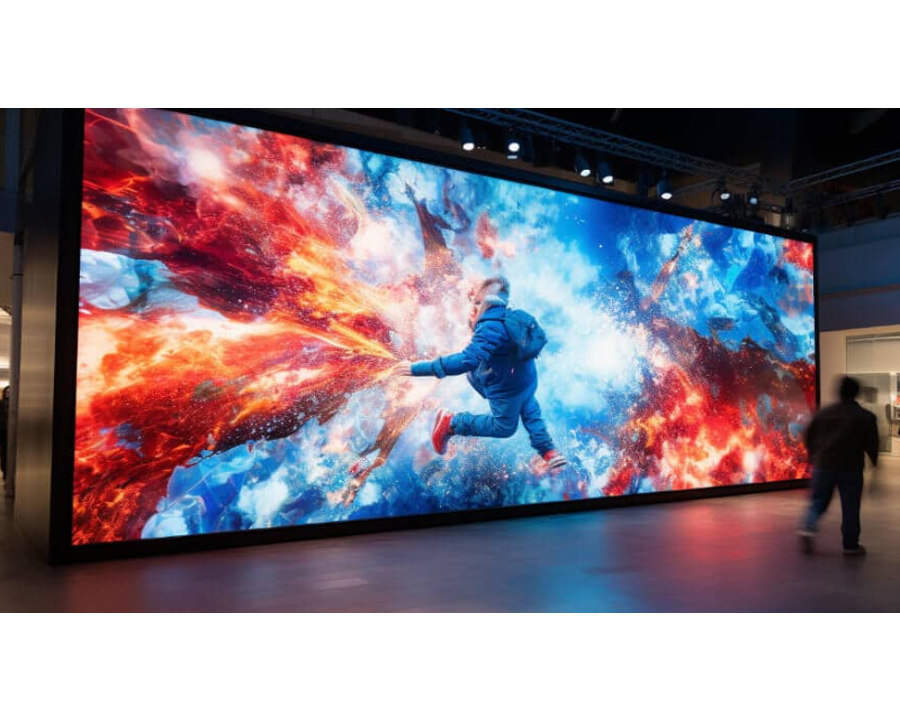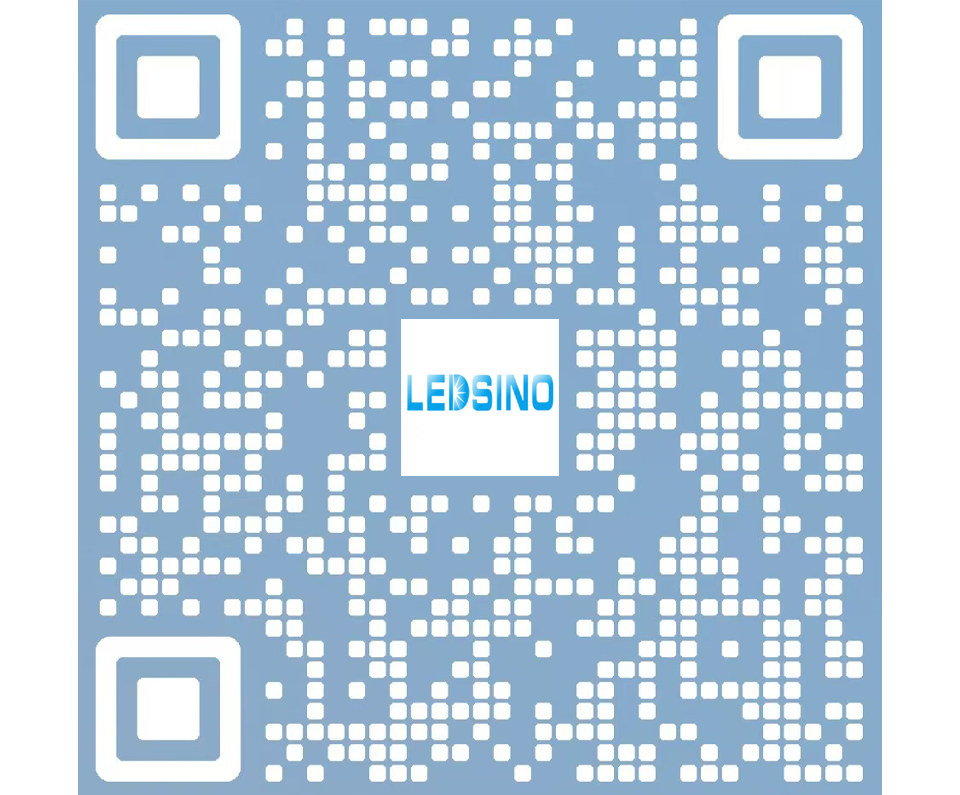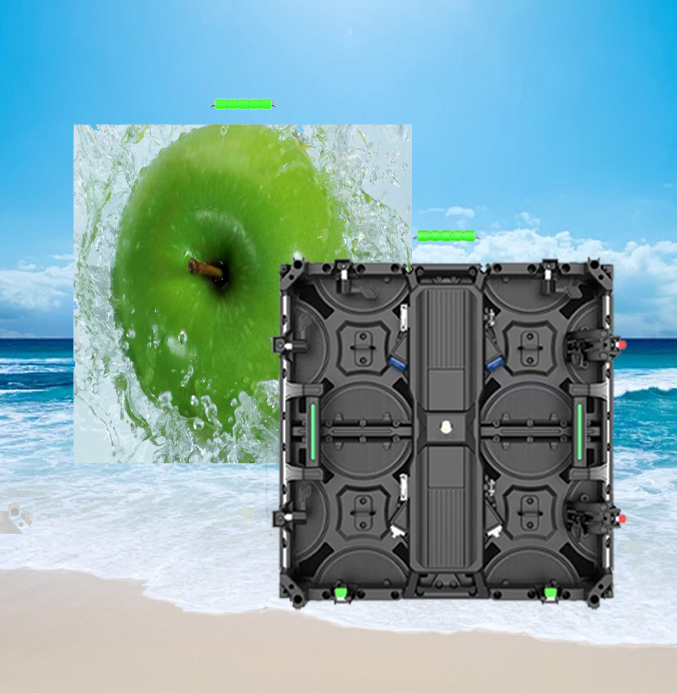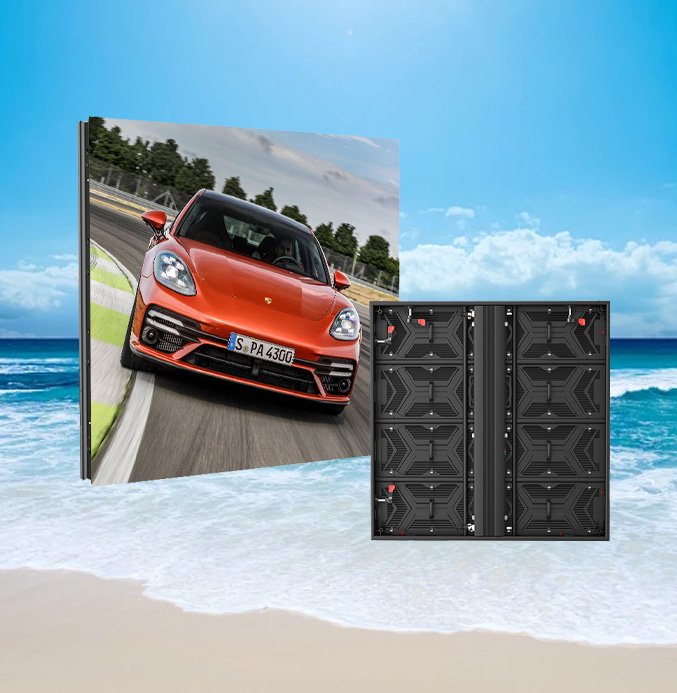
Technological advancement and innovation are influencing ways of doing things. Of particular interest is how innovation in the electronic world impacts marketing.
Marketers use images, texts, and even videos to showcase their products. As such, they are interested in an LED display panel that will deliver the message to potential clients without distortion. Read this guide to learn more about LED Displays.
What is An LED Display?
An LED Display is a panel fitted with light-emitting diodes that creates a display. Such displays are used in stores or billboards on the roads, public transport vehicles, booking stations, and stadiums.
What To Consider When Buying Led Display
Choosing the right LED display for your purpose is complex because you need to consider factors such as size, pixel density, and resolution. Other factors you may need to consider include contrast ratio and color Gamut.
Pixel Density And Resolution
Pixel density is the number of pixels in any given area. It determines how clear the display is and the resolution. Typically, the higher the number of pixels an LED display has, the better the resolution and display. Further, the resolution determines the application to which the LED display can be put.
Size
When you buy an LED display device, you hope it will be effective and serve its purpose, depending on the event. Unfortunately, some events require large LED displays, while others may do with small LED screens. Events that attract crowds of attendees, such as concerts and theatres, require relatively larger LED displays, while family gatherings could do with a small screen.
Contrast Ratio
The contrast ratio is an essential consideration since it determines the use of the LED panel. Outdoor LED displays have a high contrast ratio because they will compete with sunlight. On the other hand, LED displays with a low contrast ratio are ideal for indoor viewing.
The Color Gamut
The color Gamut refers to the colors your LED displays reproduce. Panels with a broader range of colors are better because they show more vibrant pictures on the screen. A wider color gamut brings more colors to life and is attractive to the eye.
Response Time
Response time refers to the duration it takes your LED display panel to turn on or off. Therefore, the faster the response time, the better the device.
Viewing Angle
Anyone planning to buy an LED display should consider seeing the content, text, or video from the best angle. Fortunately, the LED display industry continues to invest in LED display screens to give viewers value for their money. By optimizing the LED viewing angles, they enhance the viewing content on these screens.
Other Considerations
Other than the pixel density, size, contrast ratio, response, and viewing angles, the following considerations are equally important when buying an LED screen.
Indoor Vs. Outdoor Led Display
Where you want to install your LED display is an important consideration. Consider screens with low brightness, low pixel pitch, and high image definition for indoor use. For outdoor usage, consider screens with high brightness and low pixel density.
The best LED display size
Of course, you must pick the best LED screen panel size depending on the available space and the type of screen you want. Small screens will serve the purpose of displaying aED for family use.
However, consider a large screen for concerts where a large crowd is expected. The size should match the stage to enhance the attendees’ visual appeal.
The Optimal Pitch
Pixel pitch is an important consideration when buying an LED screen. It determines the resolution and quality of images appearing on the screen, influencing the optimal viewing distance.
A smaller pixel pitch may be pricey, but provides the best resolution. Thus, it is ideal for closer viewing. Conversely, screens with a higher pixel pitch provide optimal viewing if the distance is longer.
Types of LED Display
Indeed, LED displays have contributed significantly to the growth of digital content. They have revolutionized the delivery and perception of content. Here are a few types of LED display screens.
Organic Emitting Diodes
Pixels are light-emitting materials that display images connected to an electric current. Most pixels are independent, meaning that they turn on and off independently.
In addition, organic Emitted diodes can display any color, including deep black. Consequently, OLED finds applications in smartphones, monitors, and TVs.
Liquid Crystal Display
These are the LCDs standard in TVs and computer monitors; because of their peculiar workings, they also find applications on smartphone screens. Ideally, the crystals do not emit light but use a backlight to illuminate the pixels, allowing for contrast and brightness.
Mini Led Display
The latest technology uses tiny LEDs (Mini LEDs) as backlight for panels. Mini LEDs are suitable for controlling dimming zones and enhancing contrast. They also enable deeper blacks. Thus, this technology is readily available in high-end monitors and televisions where picture quality matters.
Direct View Led Display
These LEDs act as tiny pixels and emit light directly on the screen. Because of their brightness, they find applications in digital boards. Unfortunately, they are a bit pricey.
Microled Display
They are smaller than Mini-LEDs and act as independent pixels, offering excellent color and brightness. MicroLEDs borrow features from OLEDs and LED displays, making them suitable for large-scale applications.
Terms Used In LED Display
Considering buying an LED Display, the following terms will make your buying journey smooth and enjoyable.
LED: When connected to an electric current, this diode generates light, which transmits colors and displays images.
Pixel Density: The total number of pixels in a given LED panel. The quality of images improves when a panel has more pixels.
RGB: These are the primary colors that mix to produce other colors, generating vibrant images.
Led Scan Rate: This is the ratio of the lit LED lights compared to all the LEDs in a panel. Typically, a few LEDs are lit depending on the image or text on the screen.
Surface Mount Device (SMD) is the component that houses RGB diodes.
LED viewing angle: the screen’s central angle determines the position that gives the best viewing experience.
How Does Led Display Work?
LED screens consist of semiconductors, which come in three primary colors and emit light when subject to an electric current. The diodes create new colors to produce vibrant images.
Benefits Of Buying Quality LED Display
Buying quality LED Display comes with the following benefits:
Display Effect
Quality LED displays have high definition, excellent color reproduction, uniform brightness, and high contrast. As such, they provide vivid and eye-catching images.
They Are Reliable
Quality LED displays are not just reliable; they are stable and can be used in varying environmental conditions. In addition, they have a sound heat dissipation system that protects the screen.
Low Operating Cost
Quality LED displays perform well in different environmental conditions while minimizing costs. They are low on power consumption and have almost zero operating costs.
Conclusion
Of course, there are many other things that an individual may want to consider when buying an LED display. However, personal considerations and the purpose of the display rank high. Also, the size of the LED display, the type, and the pixel pitch are equally important.
Buy Your LED From LEDSINO Today!
LEDSINO cares about its customers. The company has invested heavily in research to ensure it provides its customers with quality LED displays. Contact us, and let’s discuss your LED displays’ needs.

Enter the digital world with our advanced display technologies.


